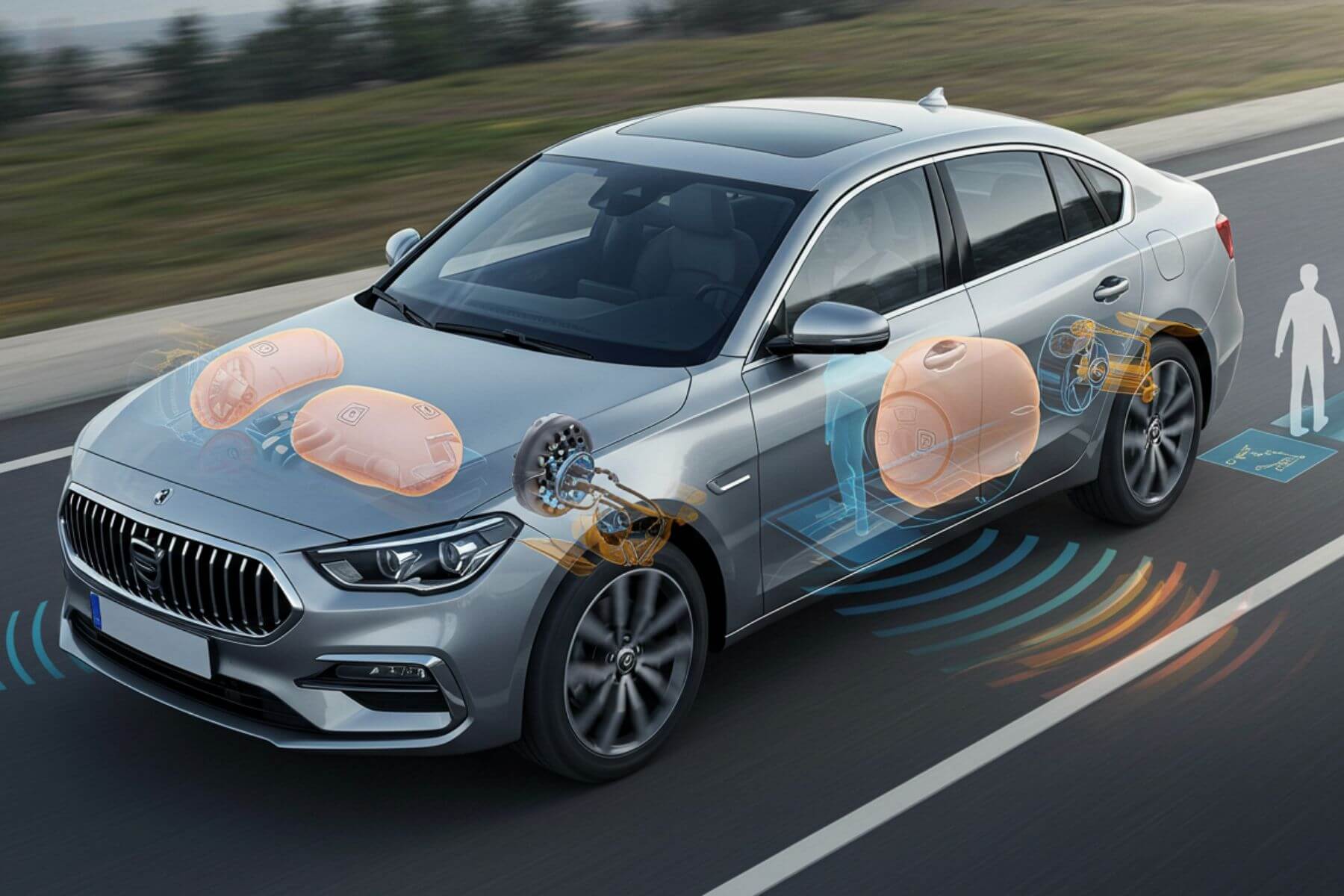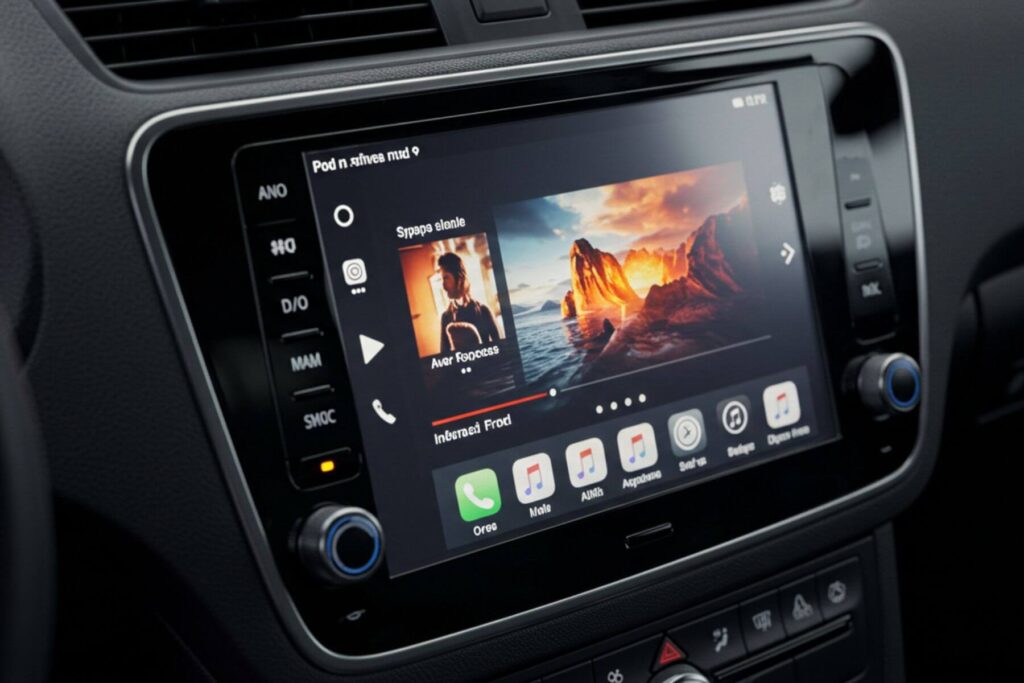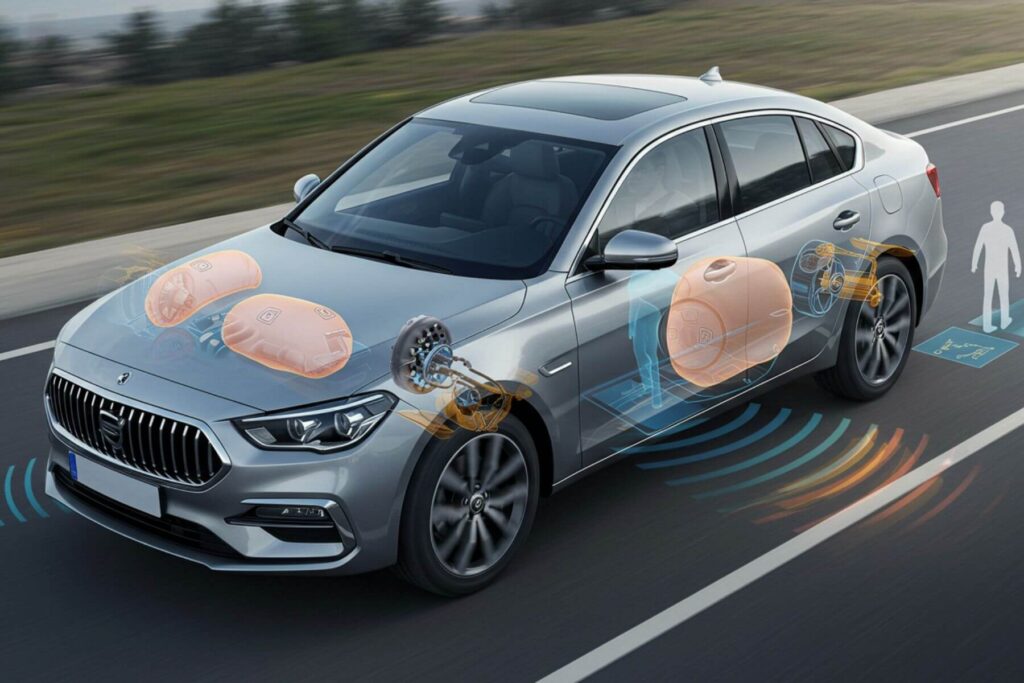Car safety is evolving faster than ever. In 2025, manufacturers are introducing smarter technologies designed not just to protect you during an accident, but to prevent one altogether. These features are becoming standard in many new vehicles, and understanding them could be the key to staying safe on the road. From advanced sensors to automatic decision-making systems, here are ten life-saving car safety features you should know about in 2025.
1. Automatic emergency braking (AEB)
Automatic Emergency Braking, or AEB, is no longer a luxury in 2025; it’s becoming a standard across many car models. This system detects a potential collision with a car, pedestrian, or cyclist and automatically applies the brakes if the driver doesn’t react in time. What makes AEB even more effective today is how it has improved with better sensors and real-time AI processing. It can now recognize dangerous situations in more complex environments like city intersections or crowded roads. By stopping your car faster than human reflexes allow, AEB can reduce rear-end collisions and serious injuries.
2. Lane keeping assist and lane departure warning
Staying in your lane sounds simple, but distractions, fatigue, or even weather conditions can cause drivers to drift. In 2025, cars are equipped with smart lane-keeping systems that gently guide you back if you begin to veer. Cameras monitor lane markings, and if the system detects an unintentional lane departure, it will either sound an alert or apply a small steering correction to keep you safe. These features are especially useful on long highway drives, helping to prevent accidents caused by drowsiness or momentary lapses in attention.
3. Blind spot monitoring
Blind spots have always been a risk when changing lanes, but modern cars are making this issue almost disappear. Blind Spot Monitoring systems use radar or sensors to detect other vehicles that are not visible in your side mirrors. If you try to change lanes while a car is in your blind spot, the system gives a warning, sometimes with a light on the mirror or a beep. In 2025, this technology has become more accurate, with wider detection zones and real-time alerts that help avoid side collisions during lane changes.
4. Adaptive cruise control with stop-and-go
Regular cruise control just keeps your car at a steady speed, but adaptive cruise control takes it to the next level. This smart system automatically adjusts your speed based on the distance between you and the vehicle ahead. If traffic slows, your car will slow down too, and it can even come to a complete stop and start moving again without you touching the pedals. In 2025, this feature is more refined than ever, making daily commutes less stressful and reducing the chance of front-end collisions in traffic jams or highway driving.
5. Driver monitoring systems
One of the biggest advancements in car safety in 2025 is how vehicles now pay attention to the driver. New driver monitoring systems use interior cameras to track eye movement, head position, and even signs of fatigue. If you start to nod off or take your eyes off the road for too long, the system issues an alert. In some cars, it can even slow down the vehicle or activate other safety features if it detects that the driver is unresponsive. These systems are especially useful for preventing accidents caused by drowsy or distracted driving, two of the most common causes of crashes.
6. Cross-traffic alert with braking
Backing out of a parking space can be tricky, especially when cars or people are coming from the sides. In 2025, cross-traffic alert systems don’t just warn you of danger; they can now stop the car for you. Using radar and camera sensors, the car detects if something is crossing your path as you reverse. If you fail to stop, the system will apply the brakes automatically to avoid a collision. This is incredibly helpful in crowded parking lots, where small children or fast-moving cars can easily go unnoticed.
7. 360-degree surround view cameras
Parking and maneuvering in tight spaces can be nerve-racking, but 2025 cars now offer a full 360-degree view from above. This feature combines input from multiple cameras placed around the vehicle to create a bird’s-eye view on the dashboard screen. You can clearly see your surroundings from every angle, making parallel parking, avoiding curbs, or spotting low obstacles much easier. These cameras don’t just make life more convenient; they can prevent accidents and damage that might happen while navigating in tight or complex environments.
8. Emergency steering assist
Even with all the warnings and alerts, sometimes you still have to make a last-second move to avoid danger. That’s where emergency steering assist comes in. This system detects when a quick steering maneuver is needed, like when a car suddenly swerves into your lane or a pedestrian runs into the road. It then helps you steer more effectively by adding extra torque and stability. In 2025, this feature works alongside lane-keeping and automatic braking to help avoid crashes without losing control of the car.
9. Advanced airbag systems
Airbags have been saving lives for decades, but in 2025, they’ve gotten smarter and more adaptable. Instead of just a front airbag, today’s vehicles come with side-curtain, knee, and even seatbelt airbags. Some high-end models now feature adaptive airbags that adjust their force based on your size, position, and seatbelt use. This reduces the risk of injury from the airbags themselves, especially for smaller passengers. These systems are constantly improving thanks to sensor technology that can read the situation and deploy the safest response possible.
10. Vehicle-to-vehicle (V2V) communication
One of the most futuristic and potentially game-changing car safety technologies in 2025 is Vehicle-to-Vehicle communication. V2V allows your car to send and receive signals from other vehicles nearby. For example, if a car ahead suddenly brakes or swerves, your vehicle can get that information instantly, even before you can see the danger. This system can alert you, slow your car down, or get ready to take action. Though still rolling out across many regions, V2V has the potential to significantly reduce chain-reaction crashes and improve overall traffic safety as more cars become connected.
Bottom line
Car safety has come a long way, and in 2025, it’s more intelligent, proactive, and personalized than ever. These technologies are not just about surviving accidents; they’re about avoiding them entirely. Whether it’s braking before you do, steering you away from danger, or simply keeping you focused, today’s safety features are designed to work with you, not just for you. As these innovations become more common across all vehicle types, knowing what they are and how they function can help you make a safer choice when buying your next car.



